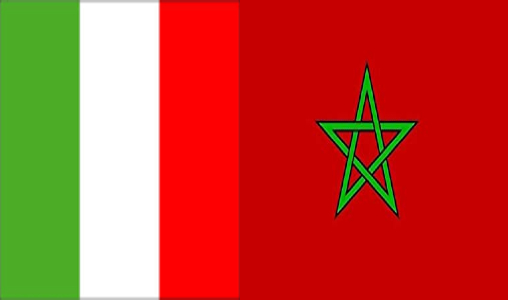As Europe reconfigures its industrial supply chains and Morocco strengthens its role as a strategic hub in North Africa, ties between Rabat and Rome are gaining new depth. Once steady but low-profile, their relationship is now emerging as a high-potential partnership driven by aligned economic interests, shared political will, and a strategic framework that is steadily taking shape.
Trade between the two countries is growing fast. In 2025, commercial exchanges are expected to surpass 5 billion euros, placing Italy among Morocco’s top European partners—just behind France, Spain, and Germany. Moroccan exports to Italy are becoming more diversified, spanning sectors like automotive components, agricultural products, electrical parts, and technical textiles. In return, Italy supplies Morocco with industrial machinery, chemicals, high-tech equipment, and specialized services.
This balance is also visible in the investment landscape. Over 200 Italian companies now operate in Morocco, mainly clustered around Casablanca, Tangier, and Kenitra. These firms are active in automotive manufacturing, energy, food processing, and logistics. The Italian energy group ENEL, a major player in renewables, is involved in various solar and wind energy tenders. Other Italian businesses are investing in water management, waste recovery, and wastewater treatment—fields where Italy has internationally recognized expertise.
The momentum increased significantly in early October, when Morocco’s Caisse de Dépôt et de Gestion (CDG) and Italy’s Cassa Depositi e Prestiti (CDP) signed a memorandum of understanding in Rome. Behind the deal is a clear ambition: to build a joint investment platform between two heavyweight institutions managing tens of billions of euros in assets.
The agreement spans key sectors like green energy, infrastructure, agriculture, urban development, tourism, and healthcare. More importantly, it lays the groundwork for collaborative financial engineering. The aim is to co-finance projects, share risks, tap into capital markets, improve financing access for small and medium-sized enterprises, and align investments with the strategic priorities of both nations.
Morocco’s selection as a base for this partnership is no accident. The country offers political stability, robust infrastructure, trade agreements with both Europe and Africa, and an aggressive industrial strategy. Programs such as the Industrial Acceleration Plan, the Green Generation agriculture strategy, and the national roadmap for green hydrogen all create fertile ground for long-term investment.
For Italy, the incentives are equally clear. There’s a push to reduce dependence on Asian manufacturing by relocating some production closer to home. Energy security is also a pressing concern, and partnering with stable, reliable countries like Morocco opens the door to broader market opportunities. In a signal of its long-term commitment, CDP opened an office in Rabat in 2024.
Still, the potential of this relationship is far from fully realized. Italian investment in Morocco remains modest compared to the presence of French or Spanish companies. Italian firms often lack detailed market intelligence or face fragmented institutional support. On the Moroccan side, challenges include the need to upskill local talent, speed up administrative reforms, and ensure a stable, transparent, and investor-friendly legal environment.
If the CDG-CDP partnership is properly implemented, it could serve as a powerful catalyst. But that depends on whether the announced projects quickly move from paper to practice. In areas like water, energy, housing, and agro-industry, the needs are well-known and the key players already involved. The next step is to align economic goals with social and environmental priorities.
Beyond diplomatic milestones and shared history, Morocco and Italy are entering a phase where their complementarity can become a true driver of progress. This is no longer a symbolic relationship—it’s becoming a pragmatic, balanced alliance powered by actors capable of delivering meaningful, visible, and lasting projects.
